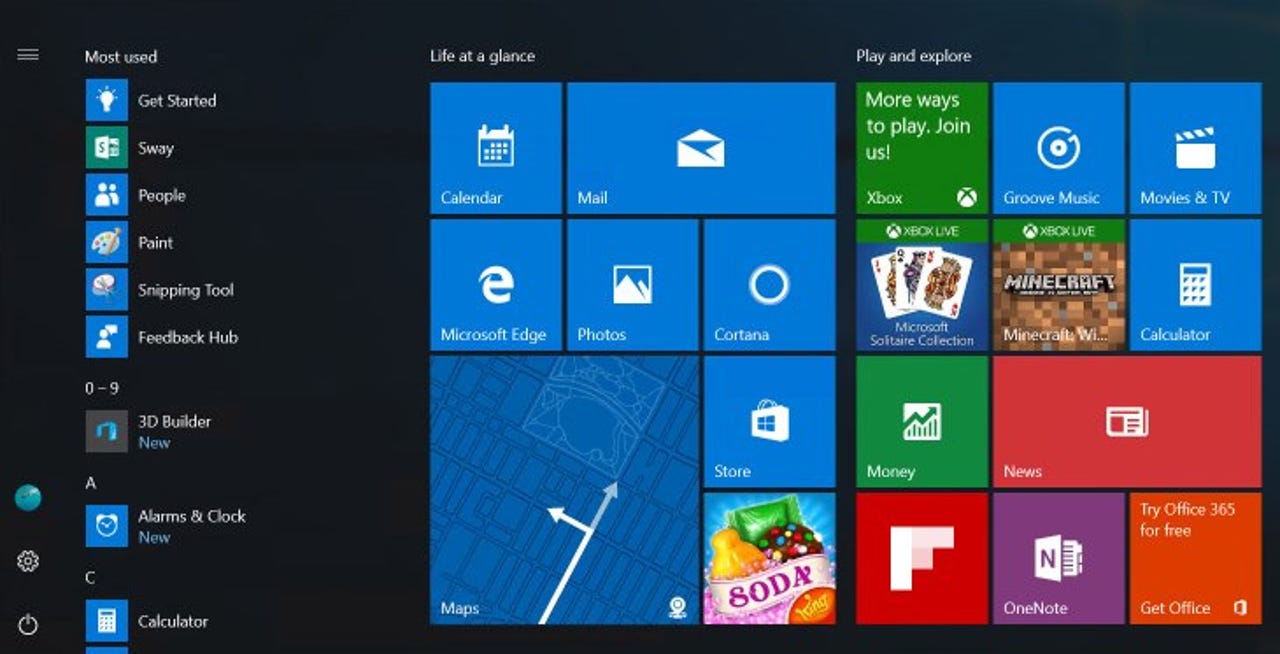Windows 10: Is Microsoft still on target for one billion devices, and does it really matter?


Windows 10.
The target was set even before Windows 10 had been launched. In April last year ahead of the July launch of the operating system, Terry Myerson, Microsoft's vice president of operating systems, said: "Within two to three years of Windows 10's release, there will be one billion devices running Windows 10."
That means roughly 330 million new Windows 10 devices every year (that's 27.5 million a month, maths fans) until July 2018. This week's announcement from Microsoft that it has reached 300 million in nine months puts Microsoft comfortably ahead of target, for now at least (see chart below).
So can if keep up that pace, and where is the growth going to come from?
Windows 10 activations.
Windows 10 is currently a free download for many consumers, so upgrades from Windows 7 and Windows 8 will be one obvious area of growth. There's somewhere around 1.6bn PCs in use. According to NetMarketShare's data, Windows 10 accounts for about 15 of those systems accessing the web, XP still has around 11 percent, and Windows 8 nearly 10 percent, while the biggest share goes of course to Windows 7, which grabs 48 percent.
The free upgrade offer isn't available for devices running Windows XP, Windows Vista, or enterprise editions of Windows, but that still leaves a lot of Windows 7 and 8 still to be upgraded.
Now that free upgrade offer for consumers is currently slated to end on July 29, after which users will either have to buy a new device to get Windows 10 or purchase a full version of Windows 10 Home for $119. A deadline is always a good way to encourage people to get moving, so expect plenty of reminders in the next few months, which could boost adoption again. Many have, however, questioned whether Microsoft will really start charging for upgrades -- after all, does anyone pay for operating systems anymore?
Business customers are still only just getting their Windows 10 plans in place now, so there's likely to be more movement there later in the year and certainly next year when the corporate upgrades are likely to start in earnest.
So where else is that one billion going to come from? Xbox One (around 20 million sold to date) and HoloLens (still in development), tablets, and phones are all counted towards the total. As Microsoft's Lumia sales have nosedived, there's not going to be much of a lift there. Thus if Microsoft was counting on another 100 million Lumias out there (not inconceivable back in April last year), then that could be something of a headache.
And as ZDNet's Ed Bott points out, another big chunk of that billion is likely to come from new PCs -- roughly 250 million Windows PCs are sold each year, and soon those will mostly be running Windows 10.
So Microsoft looks like it still has a decent chance of hitting its own target -- although it's looking a little tougher than it did a year ago -- unless that rate of adoption starts to slow.
But how important or meaningful is that target anyway? It's an important target in that it tells us about the health of the Windows ecosystem, which took a bit of a bash with all of the complaints about Windows 8. Getting as many businesses and consumers using Windows 10 is also important for Microsoft's move to Windows-as-a-service, which it has been working on.
Hitting a big number like one billion devices is a nice target for Microsoft to have, but if that's really only made up of PCs, that may not be as big a deal as it once was. There are already somewhere around 1.5 billion Android users, and over a billion on iOS -- and in a couple of years those numbers will be much higher still, as Android may well have passed two billion.
It's clear that while the PC is still important, it's no longer our most used computing device -- that's now the smartphone. Hitting a big number is one thing but in the long term what types of devices make up that billion will be more important than the number alone.